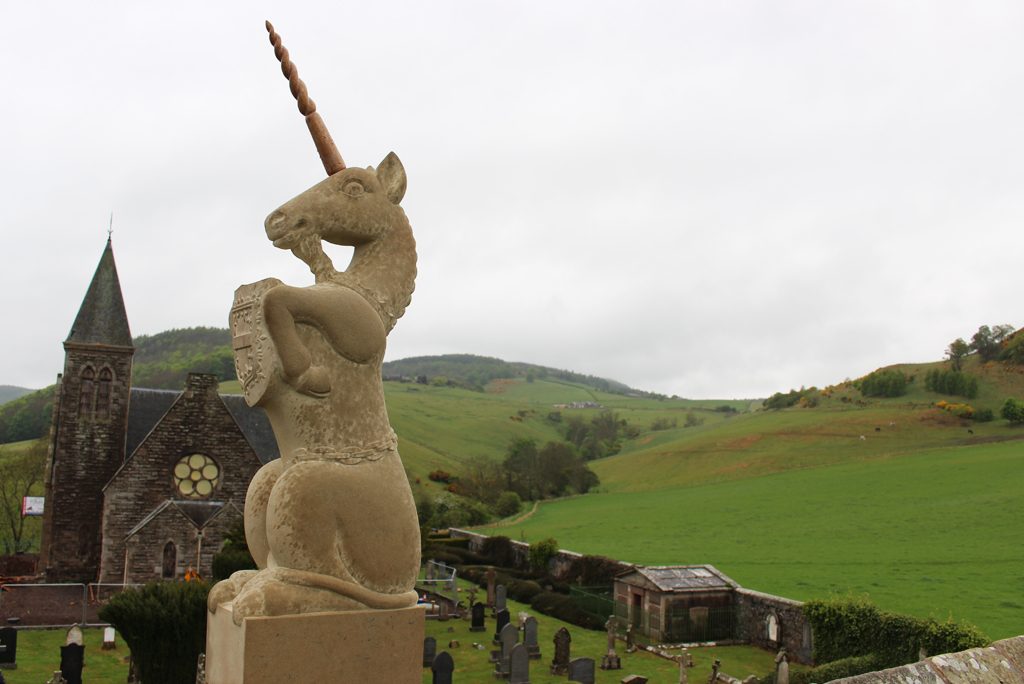Have you ever been past a historic building which has fallen into ruin? Vulnerable to weather, vegetation and disuse, many of Scotland’s old churches and historic places are in this situation.
Kinfauns Old Parish Church
Until very recently, this was also the story for Kinfauns Old Parish Church, a medieval building on the coronation path south of Scone. The site may have been passed by future kings and important dignitaries, as well as serving the rural population as a place of worship.
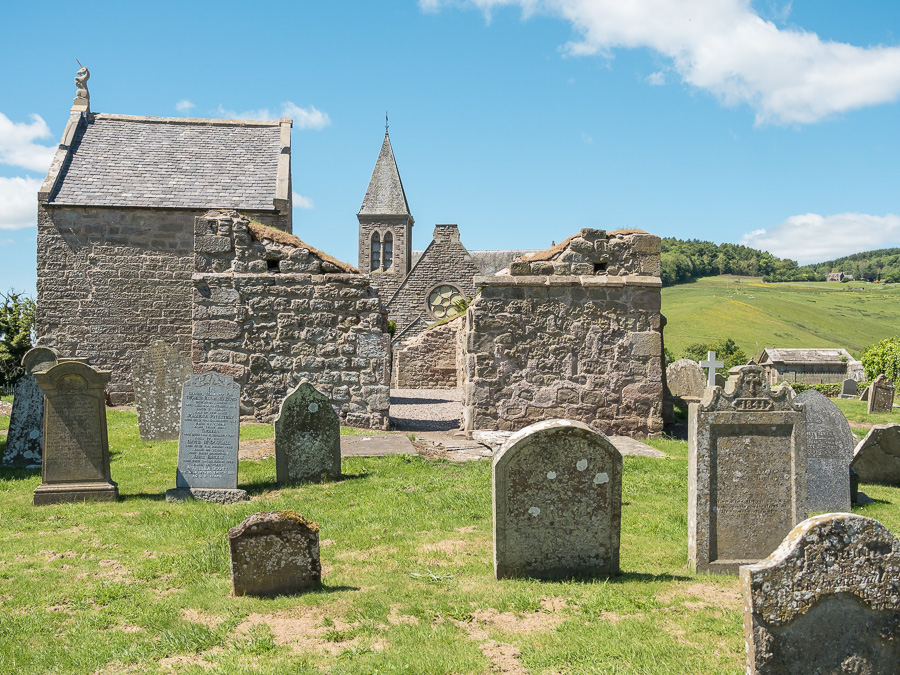
Western gable end of Kinfauns Church © George Logan
The surviving south aisle, dated 1598, is the Charteris Gray burial mausoleum. It was built by the Charteris family, said to be descended from Sir Thomas de Longueville, also known as the pirate ‘Red Rover’.
Unfortunately, since those days, the church has had mixed fortunes. In 2010, Perth and Kinross Heritage Trust began a programme of work to restore this important building.
Memorial collapse
A few years ago, a 19th century wall memorial that had been slotted into the north wall of the medieval church started peeling away from the wall and was close to collapse. It was only bedded in by 3 inches, literally hanging on by a piece of cement.
Though a later addition to the church, the memorial contributed to the significance of the monument as it formed part of the evolution of the site. This meant it needed to be reinstated.
The memorial was carefully removed and laid in the Aisle. The pieces were marked and drawn to help us fit them together again.
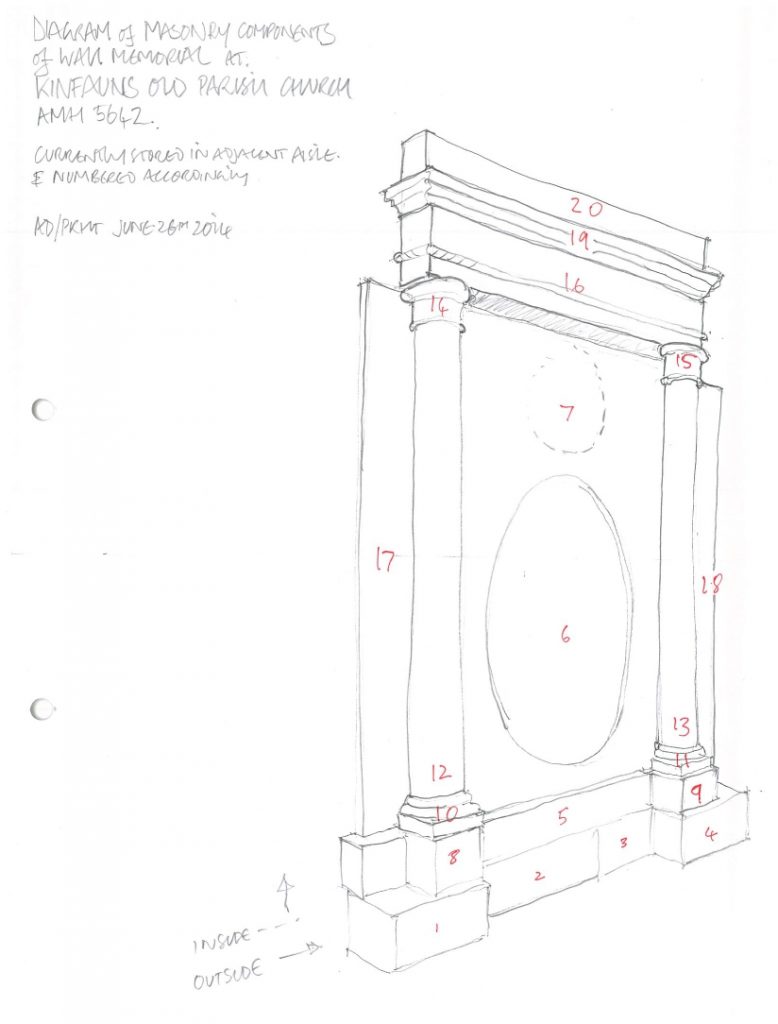
Pieces of the aisle were carefully marked and drawn
Ivy roots as thick as your arm!
The church was choked by ivy, likely planted in Victorian times as an attempt to romanticise the ruin. For many years, the plant worked to crack through the structure of the wall.
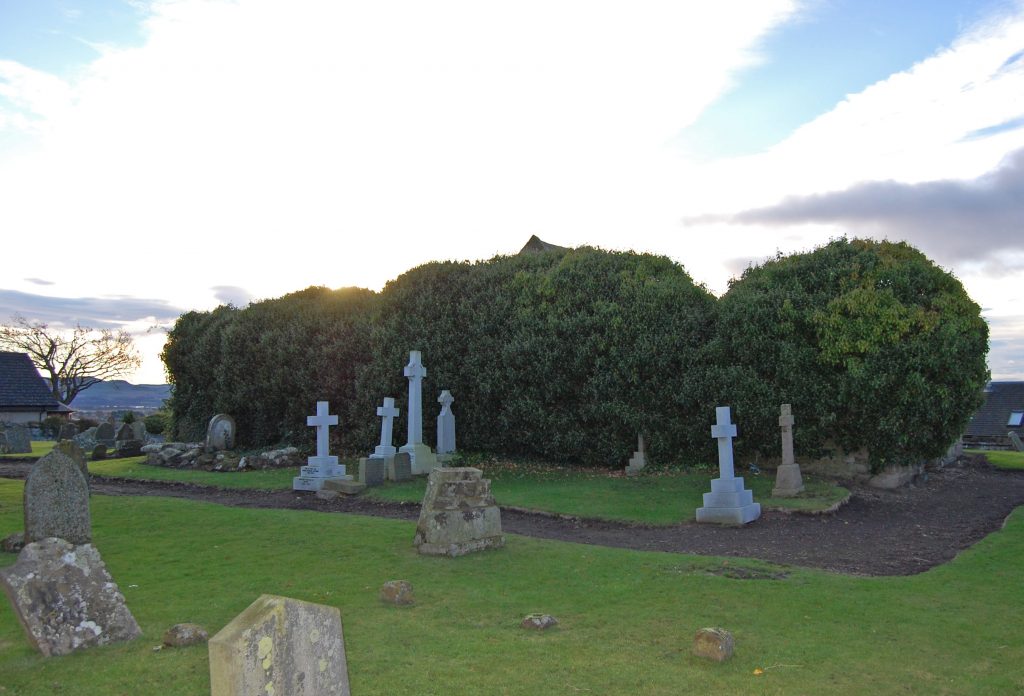
Kinfauns covered in vegetation, before any clearance
After recording the walls, stonemasons carefully removed sections of it so we could fully remove the ivy roots. The stones were safely stored, and laid out in order so the wall could be re-built using these records and photographs.
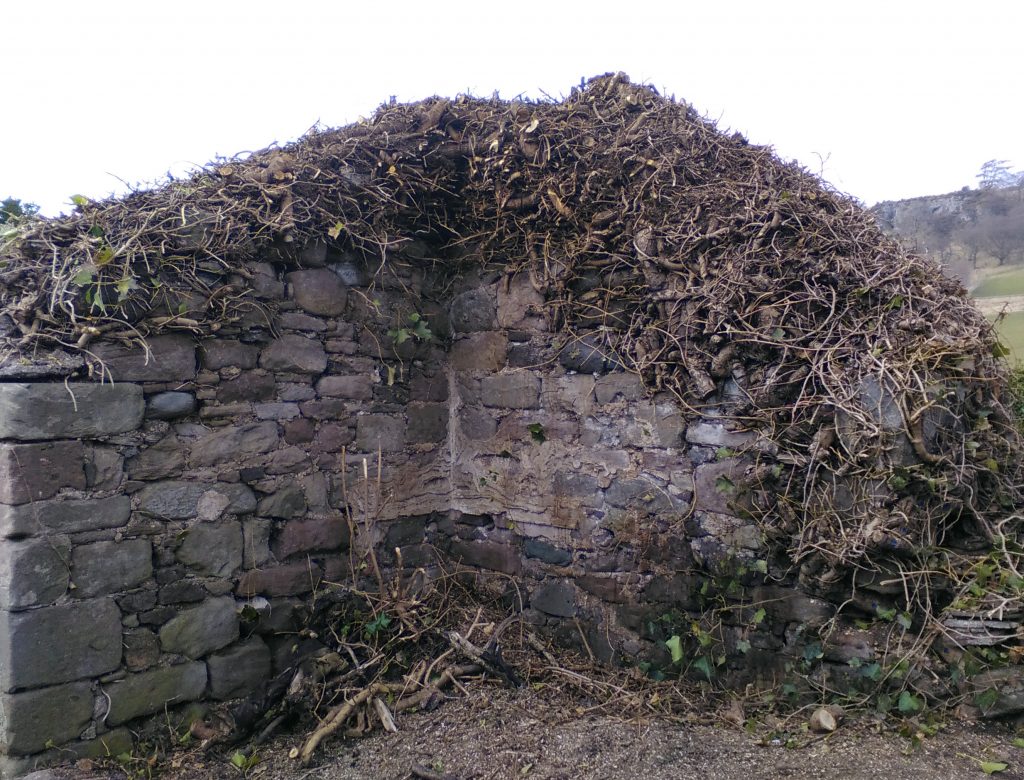
Ivy in wallheads after trimming
As you’ll have guessed, with a project like this it’s important the monument be fully recorded during every step. It’s time consuming, but it’s also the easiest way to make sure the church could be rebuilt as close to the original design as possible.
Why Does It Always Rain On Me
The Charteris Aisle was originally built without gutters. Downpipes installed during the 19th century just drained onto graveyard soil. This meant that as part of the restoration, we’d have to improve drainage.
The downpipes were moved to the front of the building, and soakaways installed. Soakaways are a method of dispersing excess water from roofs and paved surfaces and returning it into the ground. Due to the topography at Kinfauns, the likelihood of coming across burial plots, and the close proximity to the aisle building, the placement of this soakaway and its design was a tricky problem to solve.
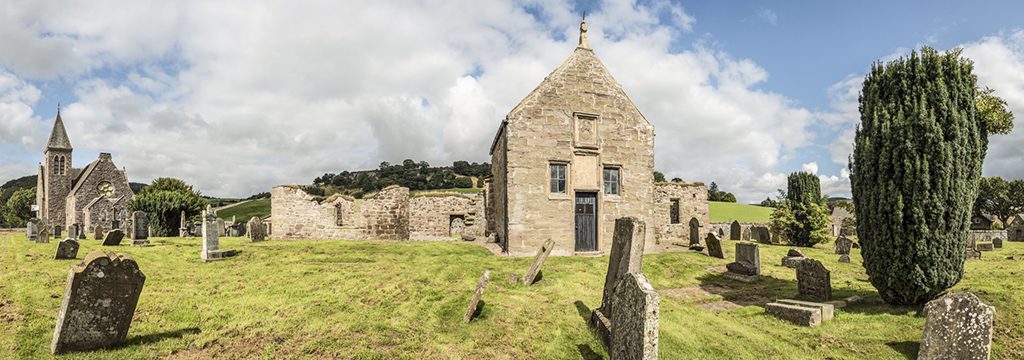
We looked at the engineers’ specification for water load, alongside information on the location of both graves and archaeological remains. Then we installed a soakaway comprised of a solid pipe in a 3ft deep trench along the front of the building leading to a perforated pipe and gravel filled pit.
This work was carefully monitored by Headland Archaeology, who actually discovered a burial in the base of the trench soakaway. This was recorded, carefully covered in a protective membrane, and left in situ. The soakaway design was then amended.
Re-carving The Unicorn
Historical photos of the church showed at least two different finials had stood atop the building. One was a thin, elongated beast with a sharp chiselled face, the other a more solid muscular animal with rounder features.
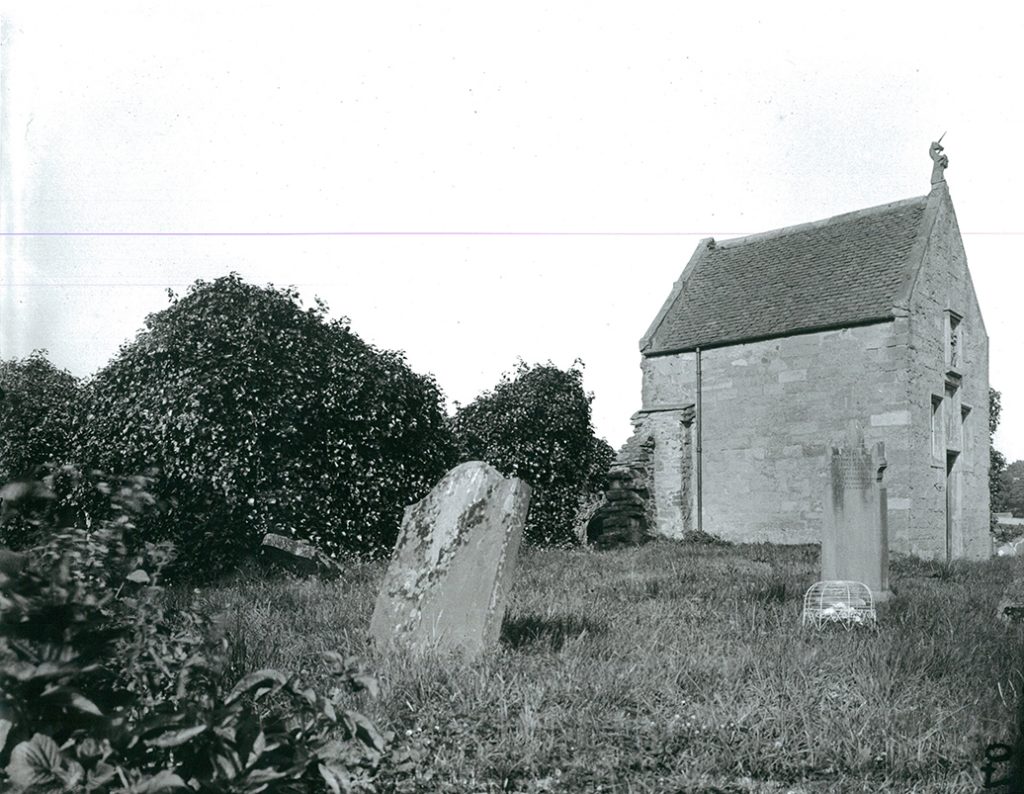
Kinfauns in the 19th century, by Magnus Jackson
Stone Carver Michelle de Bruin used photographic evidence and measurements to create a new finial for the church. She began by moulding the design in clay. She then transferred this onto a piece of stone, which matched the colour and character of the aisle’s historic fabric.
Using style details from the interior plaster work, Michelle created a magnificent piece of sculpture that finishes off the exterior repair of the building.
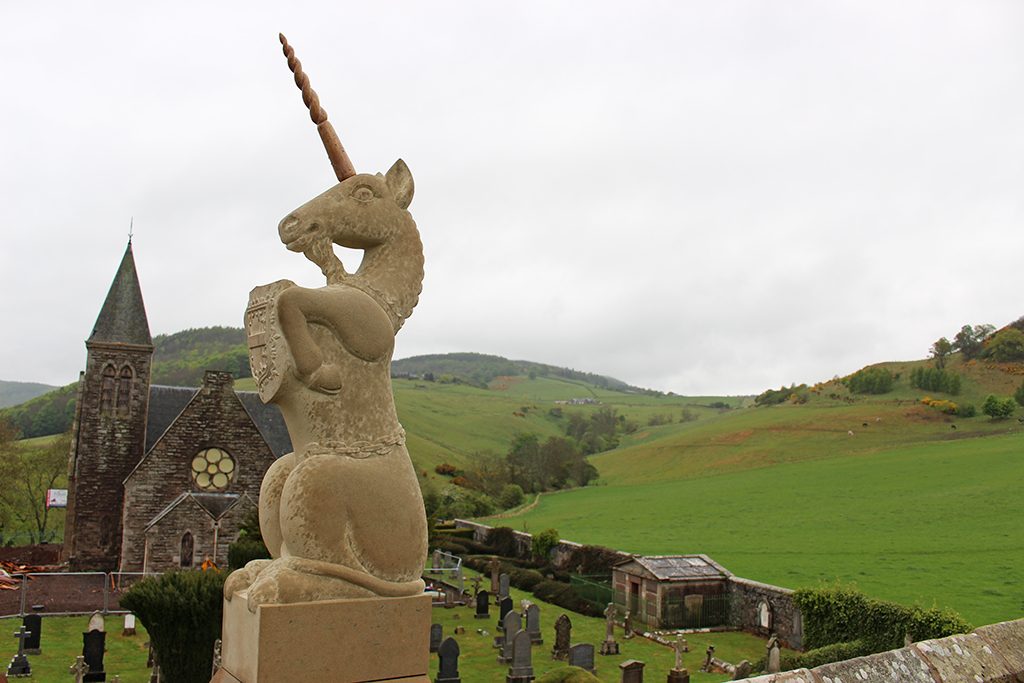
Her design was even re-created in cake form for the community opening of the church!
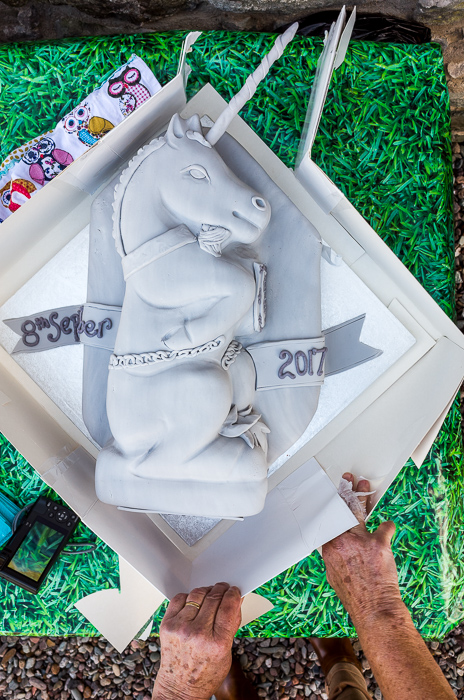
A New Chapter
What was once a ruin on a hillside overlooking the Carse of Gowrie is now restored – but we couldn’t have done this without help.
From Heritage Lottery funding and HES advice to local contractors and the local community, every single person involved in the Kinfauns project wanted to do their best for the building. By working together, we have managed to preserve a magnificent building for all of our future enjoyment.
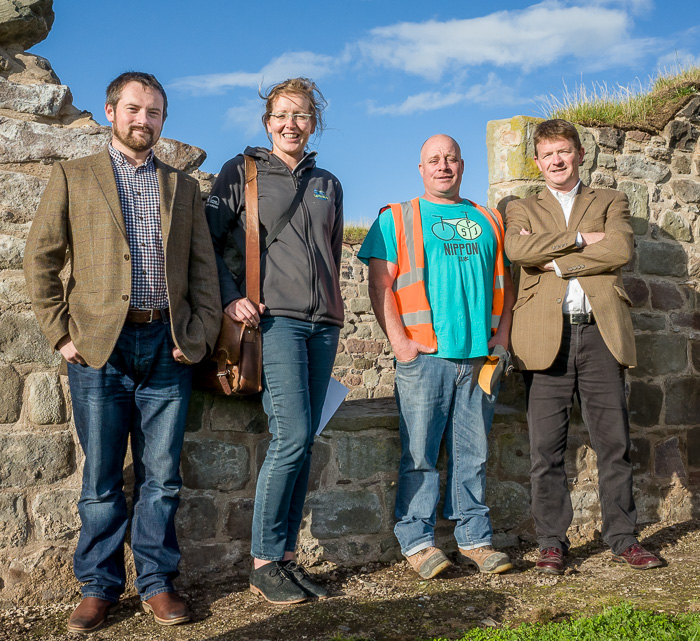
The Project Team – Oliver Lewis, Sophie Nicol, Billy Traill and Graham Mitchell
Sophie Nicol is the Historic Environment Officer for the Tay Landscape Partnership project.

